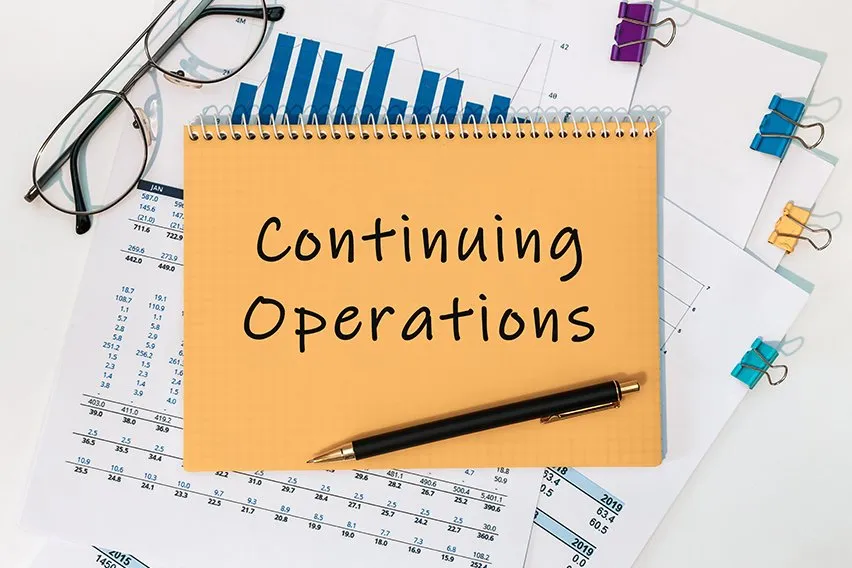Continuing Operations: What Are Continuing Operations of a Business?

Continuing operations refer to all business operations, excluding the segments that are discontinued. These operations generate revenue for the business through the sale of goods and services.
The income from the continuing operations is reported in a multi-step income statement of the business that accounts for the regular business activities, including the tasks required for making a product or providing a service. It is defined as the earnings of the business after expenses have been deducted.
What this article covers:
- What Are Continuing Operations?
- What Is Included in Income from Continuing Operations?
- Is Income from Continuing Operations the Same as Net Income?

What Are Continuing Operations?
The segments and parts of the business that are expected to operate in future are classified as continuing operations. The continuing operations should the primary income source for businesses which means that the bulk of the revenue that a business earns should be from its daily, regular operations.
The continuing operations are reported separately from discontinued operations in the financial statements.
What Is Included in Income from Continuing Operations?
The income from continuing operations is the revenue that a business generates from its primary business activities minus the expenses that it incurs in generating income. It’s a line item on the income statement that notes the after-tax earnings the business generates from its continuing operations.
Also known as operating income or operating earnings, the income from continuing operations excludes irregular revenue and expenses. For example, the business might decide to sell an asset or business property. While this may generate revenue for the business, it’s not related to the regular business income.
To calculate the income from continuing operations, subtract the cost of goods sold and other operating expenses such as cost from labor from the revenue earned from the day-to-day operations of a business.
For example, a company reports $180,000 of sales, $80,000 cost of goods sold, and $15,000 of operating expenses. Its income from operations is $85,000.
While calculating the income, exclude interest earned or paid and taxes. Do not include any gains or losses from irregular business activities such as sale or purchase of business assets. investment or the purchase or sale of business assets.

Is Income from Continuing Operations the Same as Net Income?
The net income is different from the income from continuing operations.
While the net income includes the income from the continuing operations as well as the unusual and irregular income and the income from discontinued operations, the income from continuing operations only takes into account the revenue generated from regular business activities.
For business owners, analysts and creditors, recognizing the differences between income from continuing operations and other non-recurring items provide insight into the profitability of the business.
RELATED ARTICLES


 How to Calculate Overhead Costs in 5 Steps
How to Calculate Overhead Costs in 5 Steps What Is a Perpetual Inventory System?
What Is a Perpetual Inventory System? How to Calculate the Ending Inventory?
How to Calculate the Ending Inventory? What Is an Accounting Journal? Definition of Journal in Accounting
What Is an Accounting Journal? Definition of Journal in Accounting What Are Noncash Expenses? Meaning and Types
What Are Noncash Expenses? Meaning and Types 6 Types of Activity Ratios: Explained
6 Types of Activity Ratios: Explained